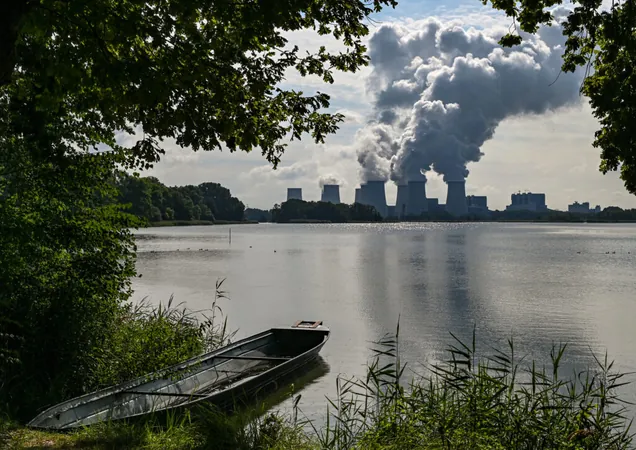
Alarm Bells Ring as CO2 Levels Hit Record Highs in 2024!
2025-04-24
Author: Sarah
2024's Shocking Surge in CO2 Concentration
A startling new report reveals that 2024 has witnessed an unprecedented leap in the global average concentration of carbon dioxide (CO2) in our atmosphere. This record surge, measured in parts per million (ppm), signals a dire warning for our planet.
A Troubling Trend Since the 1800s
Since the dawn of the Industrial Era, when coal and oil burning began in the mid-1800s, atmospheric CO2 levels have seen a dramatic rise from a pre-industrial baseline of 280 ppm. Over recent years, increases typically hovered around 1 to 2 ppm annually, but last year shattered this pattern with a staggering increase of 3.75 ppm.
A Dangerous Milestone Approached
This dramatic spike has pushed the global mean concentration perilously close to 430 ppm, marking a 40% acceleration since pre-industrial times. Such levels are projected to elevate global temperatures by approximately 2.7°F (1.5°C), exceeding the ambitious goals set by the Paris Agreement. If these trends continue, it appears increasingly unlikely that the world will successfully limit warming as intended.
Experts Sound the Alarm
Renowned climate researcher Zeke Hausfather from Berkeley Earth voiced his concerns, describing the 2024 spike as "definitely worrying." While some fluctuations are expected in El Niño years, the magnitude of this jump is particularly alarming. Historically, CO2 increases during previous El Niño events, such as those in 1998 and 2016, were around 3 ppm—far less than the current surge.
The Weakening Land Sink
Hausfather speculates that this anomaly may indicate a significant weakening in the land sink—ecosystems like forests and wetlands that typically absorb CO2. Despite some carbon absorption last year, the land sink's effectiveness was the lowest since 1998.
A Darker Outlook?
Even if the growth rate of CO2 emissions slows in 2025, there remains apprehension that this year's increase reflects underlying issues such as soil and vegetation responses to rising temperatures. The alarming reality is that multiple indicators—like overlooked spikes in global surface temperatures and shrinking polar ice—are flashing red on our climate dashboard.
The Silence from NOAA
Contrary to past practices, NOAA's communication surrounding this year's CO2 increase has been notably muted, leading to speculation about political influences affecting climate science dissemination.
Economic Recovery and Emission Trends
Climate scientists like Michael Mann link the current CO2 spike to economic recovery after COVID-19 lockdowns. However, there’s cautious optimism that emissions may plateau thanks to advancements in decarbonization efforts.
A Call for Action and Hope
While some experts, like James Hansen, emphasize the continual rise in fossil fuel emissions and record-warm oceans, he also highlights a glimmer of hope. The airborne fraction of emissions has been trending downwards over recent decades, hinting that with concerted efforts to reduce emissions, the growth rate of CO2 could eventually decline too.
As we face these overwhelming challenges, immediate action is paramount. The future of our planet hangs in the balance.




 Brasil (PT)
Brasil (PT)
 Canada (EN)
Canada (EN)
 Chile (ES)
Chile (ES)
 Česko (CS)
Česko (CS)
 대한민국 (KO)
대한민국 (KO)
 España (ES)
España (ES)
 France (FR)
France (FR)
 Hong Kong (EN)
Hong Kong (EN)
 Italia (IT)
Italia (IT)
 日本 (JA)
日本 (JA)
 Magyarország (HU)
Magyarország (HU)
 Norge (NO)
Norge (NO)
 Polska (PL)
Polska (PL)
 Schweiz (DE)
Schweiz (DE)
 Singapore (EN)
Singapore (EN)
 Sverige (SV)
Sverige (SV)
 Suomi (FI)
Suomi (FI)
 Türkiye (TR)
Türkiye (TR)
 الإمارات العربية المتحدة (AR)
الإمارات العربية المتحدة (AR)